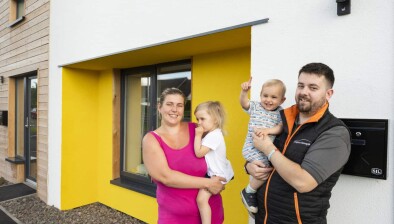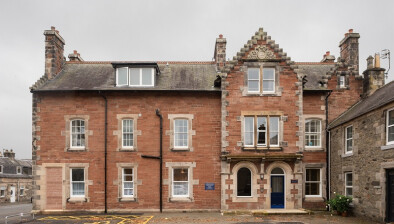Mike Staples and Ronnie MacRae: Homes for local workers - a community-led solution
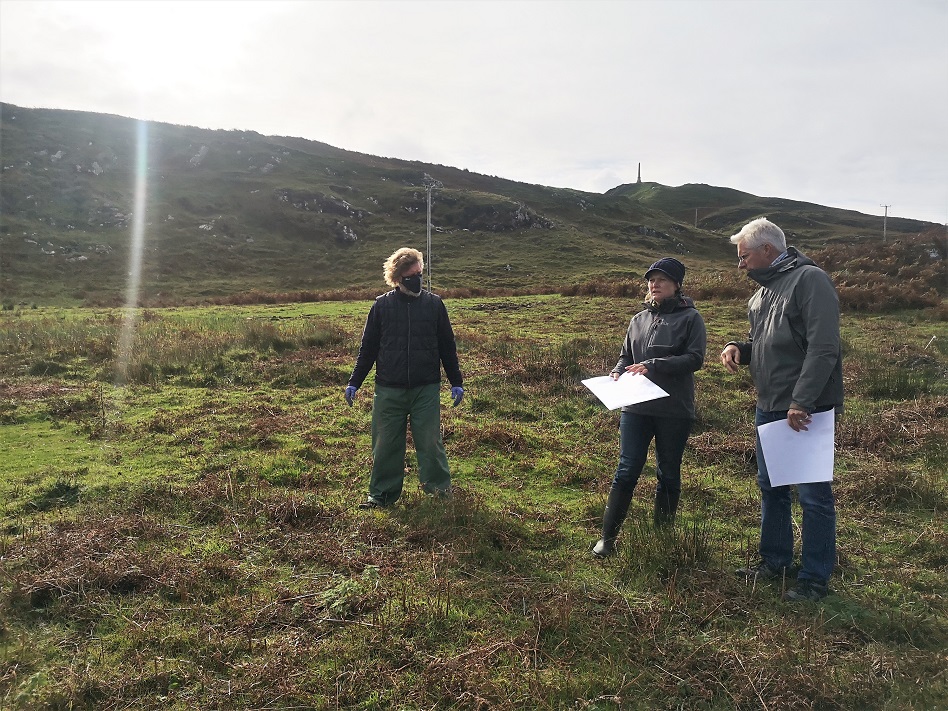
Colonsay: CCDC directors Andrew Abrahams & Dannie Onn and project coordinator Carrie Seymour survey the housing site in Scalasaig (Credit Caitlin NcNeill)
Mike Staples, chief executive at South of Scotland Community Housing (SOSCH), and Ronnie MacRae, chief executive at Communities Housing Trust (CHT), who have worked with hundreds of communities across Scotland, facilitating well over 1,000 affordable homes between them, continue their monthly series of blogs about community-led housing in Scotland.
In a 2021 survey of Badenoch & Strathspey, the Cairngorms Business Partnership found that 68% of businesses reported a shortage of housing had impacted on their efforts to recruit staff, and 60% felt that a shortage of housing had impacted on their efforts to retain staff. 35 businesses reported people had declined job offers due to their inability to secure housing, with 91% saying it was a recurring issue.
A study in April by Mull & Iona Community Trust showed that 78% of businesses report that the lack of worker housing is impacting on their current operation, and 73% believing it creates staff retention issues. A recent survey of Glenkens and District Trust similarly indicated critical challenges securing enough housing to attract and retain staff from some of the region’s largest employers.
This picture is reflected across Scotland, with areas heavily reliant on tourism affected most acutely. In November 2021, over a third of Scottish businesses reported experiencing a shortage of workers, and around half of businesses in the hospitality and construction sectors struggled to fill vacancies.
“The future of our business is seriously at risk. We are already being forced into reduced operating hours and staff pressures are making this worse all the time. We are able to offer really attractive terms to work here and staff would love to move here, but it is almost impossible due to housing shortages.”
– a business in Cairngorms Business Partnership survey 2021, Communities Housing Trust
This is a dire situation. Not for any grand aims of economic recovery or growth, but simply because it’s affecting people’s ability to live day-by-day, let alone live well.
Private rented tenancy legislation has had a negative impact on availability of worker housing, especially in rural areas. It’s a complex area which we feel is not properly understood by civil servants, and would recommend a review to ensure that appropriate amendments are implemented which work for all. There’s a clear need for short-term, emergency accommodation to support businesses, which cannot be supported through schemes such as the Rural & Islands Housing Fund.
We therefore need to come up with ways of assisting and enabling accommodation for workers. Between SOSCH and Communities Housing Trust, we believe we have developed some of the solutions and would welcome the opportunity to explore these and implement them on a wider scale, with appropriate support.
At the risk of sounding like a broken record, this issue can be tackled effectively through a community-led approach.
Housing workers in rural and fragile communities
In rural, remote or fragile communities, affordable homes close to key employers help attract and develop a skilled workforce. Such homes also build resilience by creating diverse work opportunities for residents.
Some large employers have historically provided housing for their workers; some did so until the pandemic when the homes were sold off; some are looking into it now as a pressing issue.
An alternative approach would be businesses and staff, or indeed just communities more broadly, coming together to jointly provide homes.
The affordable, high quality, healthy homes and spaces that community-led housing creates (see our previous blogs, for example here and here) help make remote or rural communities attractive places to live and work.
They also help combat urban drift that many of the communities we work with are experiencing. This includes a concerning outward migration of younger people, unable to find jobs and housing, leaving behind ageing populations vulnerable to reductions in services as there are simply not enough working-age people to keep them going.
How it works
It’s a simple idea to live near where you work. Living locally reduces commutes, prioritises green transport networks, keeps spending power locally, and frees up time for other things, increasing quality of life. It supports the principles of a ’20-minute neighbourhood’ with positive climate impacts and promotes circular economies. In reality, this simple idea may present a huge challenge for rural communities.
Community-led housing presents a feasible solution to these complex environmental and economic issues.
A main benefit of community-led housing is that it can be flexible and responsive to peoples’ needs, including shifts in work patterns, commuting, and spacial requirements. For example, it may include a community hub or co-working space to support the changing needs of working people throughout the ongoing pandemic.
The community development trust All Roads Lead to Whithorn (ARLTW) in Whithorn, Dumfries has refurbished two family flats on the high street for local people. At the same time, ARLTW is refurbishing the Town Hall into a Hub and Bunkhouse that includes flexible space and a learning hub to support the community’s co-working and learning needs. The Hub is projected to provide up to £100,000 worth of community and tourism benefits each year, with many visitors attracted by the popular Whithorn Way pilgrimage.
12 community-led affordable homes in Tomintoul in the Cairngorms have just opened for applications, a partnership between Tomintoul & Glenlivet Development Trust and the Communities Housing Trust. Futureproofing includes energy efficiency measures, PV panels and EV chargepoints, as well as homeworking space in some homes, in response to community needs.
In addition, community-owned housing often provides rental income that can be reinvested within the local community.
Case studies
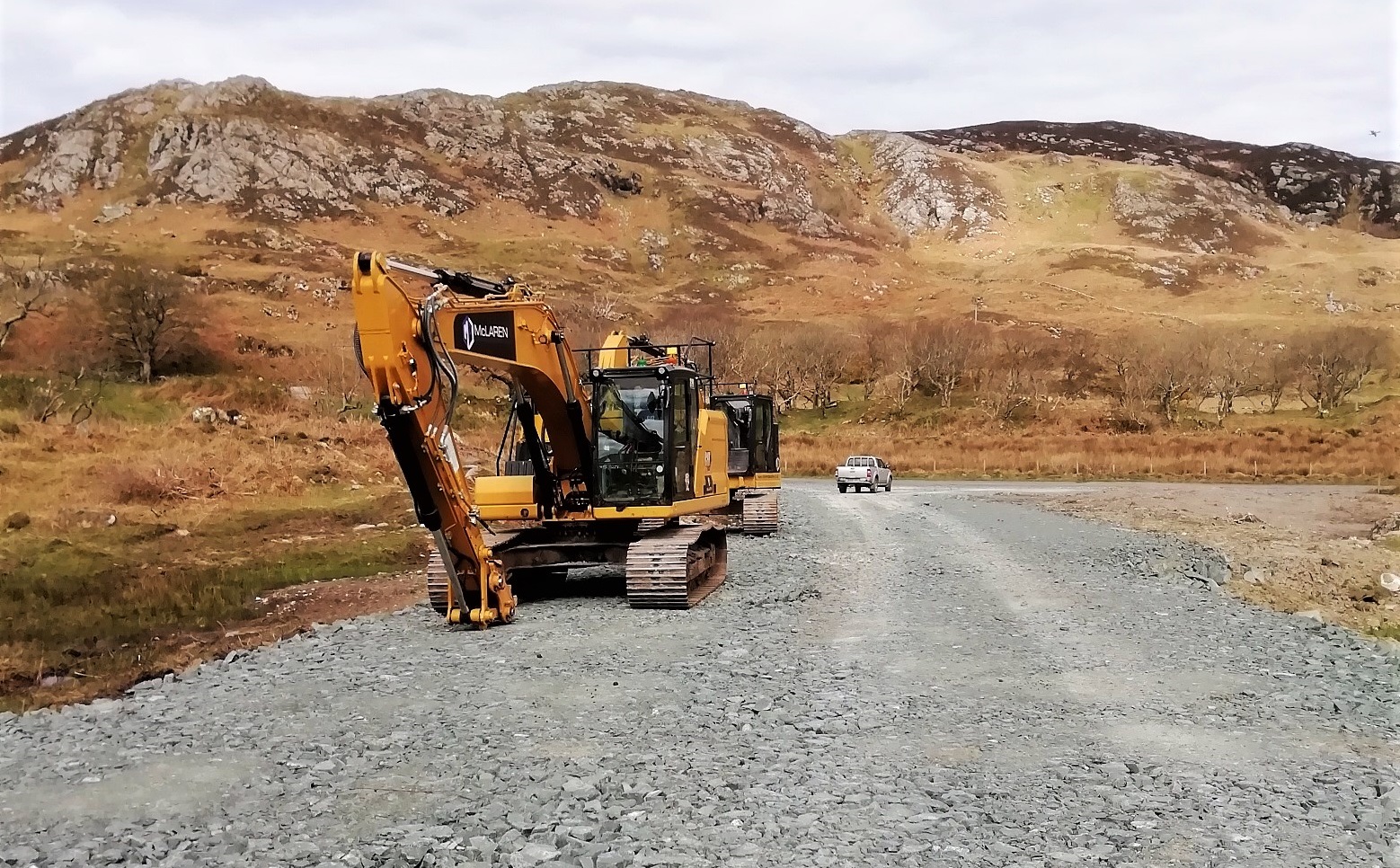
Colonsay in April 2022 (credit: CCDC)
In Colonsay, there are just two pupils left in the primary school. There are fewer than 10 residents aged 18-30, and the island is struggling to keep the ferry, plane and fire services going (on top of ‘normal’ jobs, of course). Over 40% of housing stock on the island is now holiday- or second-homes, with very few options for available affordable housing stock. The issue here is overemployment with the threat of services closing, leaving working-age residents stretched to breaking point.
Outside the main settlement of Scalasaig, the Communities Housing Trust negotiated a sale of land from the estate, and work has begun on up to 24 affordable homes in partnership with Colonsay Community Development Company. All these homes will be protected for use by the local community, and their affordability will also be protected in perpetuity. A second site will provide new commercial units and workshop space. The community are leasing some of the land to MOWI, who will provide an additional three houses of multiple occupancy for their own staff, as recruiting and retaining staff was a recurring issue for the company’s Colonsay site. As and when MOWI decide they don’t need the homes anymore, they will return to community use.
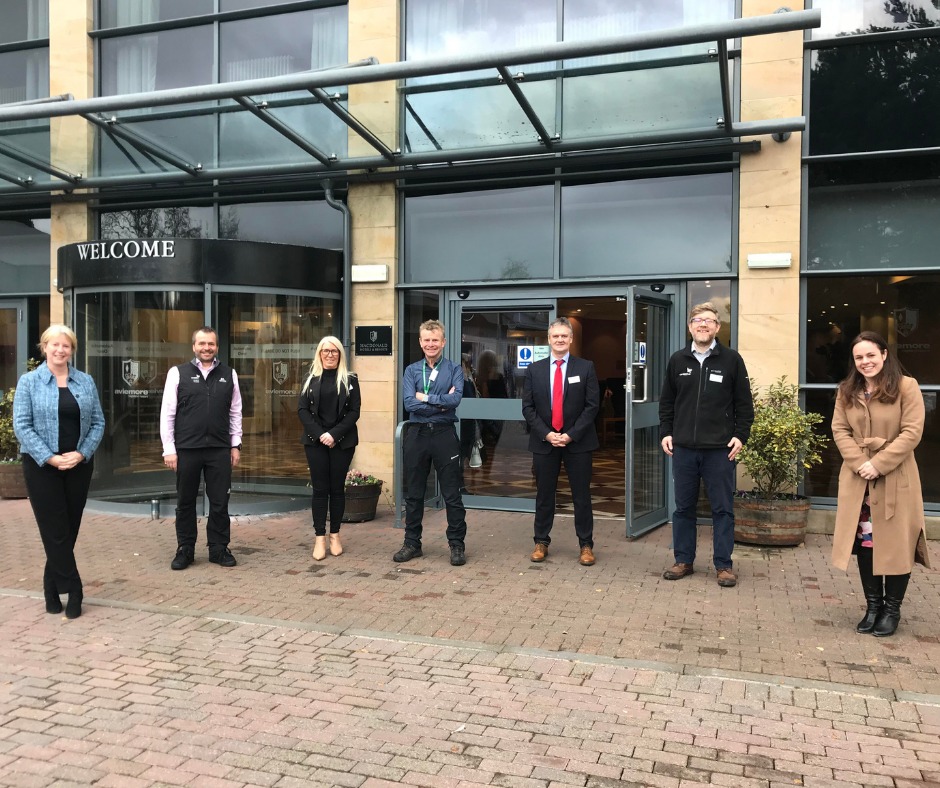
Aviemore Housing Summit November 2021, with Kate Forbes and Shona Robison
In Aviemore within the Cairngorms National Park, the Communities Housing Trust is working with the Cairngorms Business Partnership and its member businesses to develop and implement a range of solutions to tackle the lack of housing, including flexible forms of tied housing.
Similarly in Balmaha, in Loch Lomond and the Trossachs National Park, the Communities Housing Trust is working with East Loch Lomond Community Trust to provide 20 homes on the site of a former plantation, transferred to community ownership from Forestry & Land Scotland. Many local businesses have inputted to the project, in order to employ and retain staff.
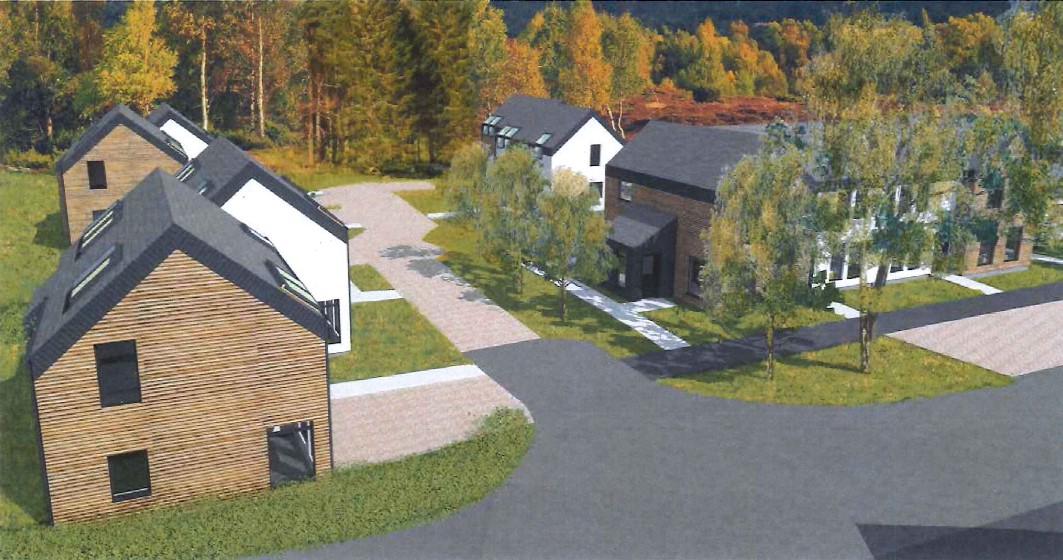
Balmaha visual
The four new Police Station homes in Langholm delivered by the Eskdale Foundation and SOSCH in 2021 play an important role in supporting other regeneration and repopulation efforts in the area. The Langholm Alliance, an umbrella community organisation approved by Scottish ministers to oversee the economic regeneration of Langholm by 2030, brings together 73 groups working to increase economic vibrancy in the town.
This concerted effort to attract more businesses, employees, and boost the tourism industry in Langholm in the wake of its textile industry decline urgently requires affordable homes. The Old Police Station homes support the town’s wider ambitions by providing secure and attractive places to live for people moving or returning to Langholm.
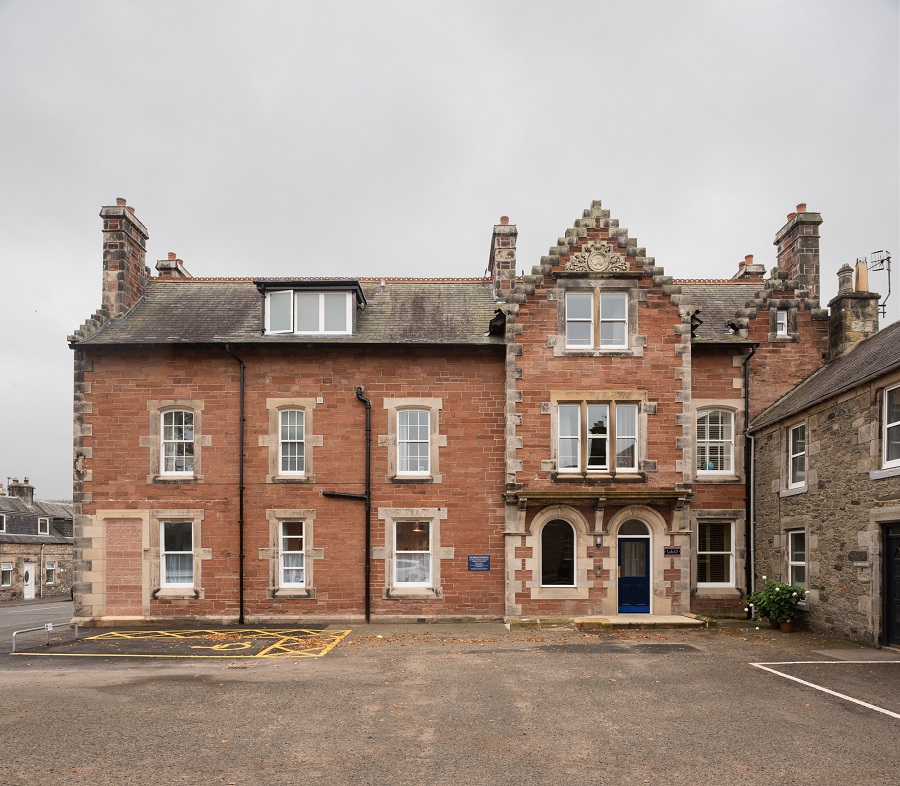
Langholm Old Police Station (credit: Tom Manley)
SOSCH supported Wigtown & Bladnoch Community Initiative’s (WBCI) refurbishment of a former Bank of Scotland building on the Wigtown High Street. The community created two new affordable homes and a bunkhouse for 8 visitors. WBCI will employ full-time staff to manage the bunkhouse. . As Scotland’s National Book Town, tourism is important to Wigtown’s local economy, and this project means the community can directly benefit from its growth.
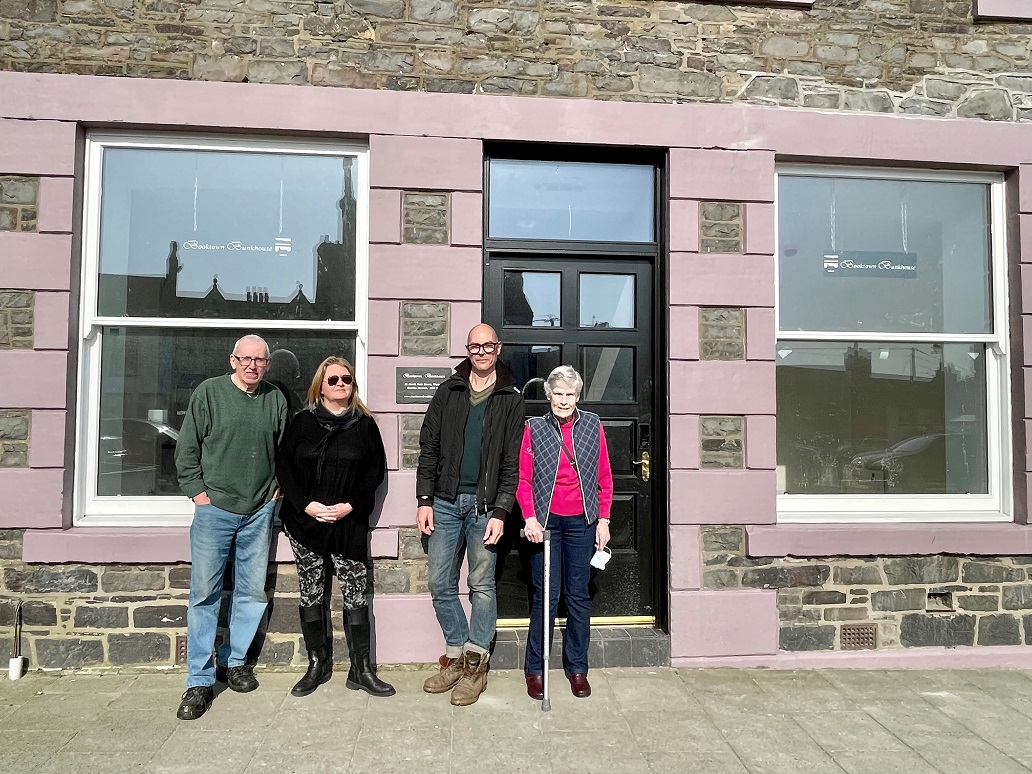
WBCI homes & visitor bunkhouse (credit: Hazel Smith)
SOSCH is also currently supporting Glenkens and District Trust in planning the delivery of community-led housing across the region. In addition to a community housing survey that was sent to residents, SOSCH surveyed large employers in the Glenkens and District area to establish housing need and demand from their workforce. This data helps establish a picture of the housing issues key employers face when recruiting staff, as well as difficulties existing employees have in securing housing.
One large employer in the region reported:
“New staff relocating to the area have found it challenging to find affordable and available accommodation… [A]s an organisation, the lack of readily available housing could lead to potential new staff looking elsewhere.”
– a Glenkens and District area key business
The bottom line
Community-led housing is a sensible approach to deliver worker housing in that it not only tackles the current need in the community, but it plans for future need by working with local people, businesses and employers.
It creates affordable and long-lasting homes that attract and retain new people into the community, and supports sustainable, thriving populations and economies.
Community-led housing enables communities to prepare for the future they would like to see.




